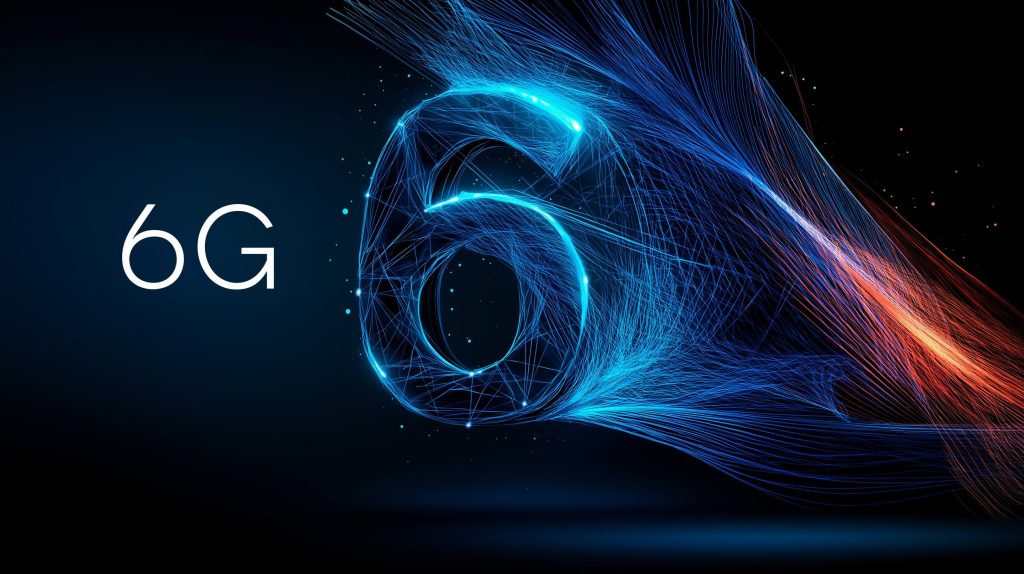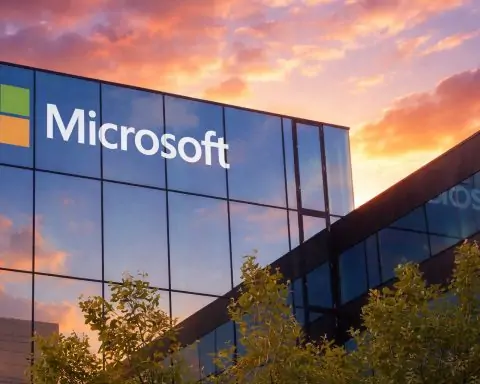- Samsung unveiled Galaxy Z Fold7 and Z Flip7 on July 9 at Galaxy Unpacked in New York, the 7th-generation foldables with an 8-inch Fold7 display and a 200 MP camera, shipping with Android 16/One UI 8 and priced at $1,999 for the Fold7 and $899 for the Flip7 FE.
- Huawei launched the Pura 80 Ultra in Dubai on July 10, featuring two switchable telephoto cameras with 3.7x and 9.7x optical zoom and a distinctive triangular camera island, with HarmonyOS 5.1 on Chinese models and EMUI 1.5 globally due to US chipset bans.
- Nothing released the Phone (3) on July 1 in London, introducing a refreshed design with the Glyph Matrix back lighting.
- In India, Madhav Sheth launched a new AI+ smartphone brand on July 8 offering the Nova 5G and Pulse 4G around ₹5,000 with Unisoc chipsets and local data storage.
- OnePlus launched the Nord 5 on July 8 powered by the Snapdragon 8s Gen 3 with a 144 Hz AMOLED display, alongside the cheaper Nord CE 5 with a 7,100 mAh battery.
- T-Mobile’s T-Satellite with Starlink went live on July 23, letting standard smartphones text via satellite with no external antenna, including free 911 texting and an optional $10/month plan for others, with satellite data service planned by October and partners like WhatsApp, Google, and Apple.
- SoftBank and Nokia began outdoor 6G trials in Tokyo in July 2025 using the 7 GHz FR3 band, deploying three Massive MIMO base stations in Ginza to probe high frequency coverage and capacity, with SoftBank CEO Masayoshi Son bullish on AI and 6G.
- Apple and Google phones now support emergency SMS via satellite as of July, with iPhone 14/15/16 series and Pixel 9 series able to text via satellites, and Galaxy S25 models satellite ready when paired with carrier services.
- The EU Smart Networks initiative opened €128 million in funding to support 6G trial projects in July.
- Ericsson’s Mobility Report (June 2025) foresees 2.9 billion 5G subscriptions by end 2025, while Vietnam has deployed 11,000+ 5G base stations aiming for nationwide coverage and over 10 million 5G users.
Global Science Highlights from July 2025
A Jam-Packed July for Mobile Tech: From ultra-slim foldables in New York to 6G trials in Tokyo, July 2025 delivered a cascade of mobile technology breakthroughs around the world. In just a few weeks, we saw new smartphones launches (from budget models to bleeding-edge flagships), significant OS updates focusing on AI, ambitious foldable innovations, advances in mobile chips, and even progress toward 6G connectivity. Major players across Asia, Europe, and the Americas all made headlines, often in their native languages, underscoring the truly global scope of mobile tech today. Industry leaders and experts have weighed in with bold statements – and we’ve gathered their direct quotes – to make sense of these developments. Below, we break down the biggest mobile tech news from July 2025 across key categories, linking to primary sources and reputable outlets for each.
Global Smartphone Launches and Foldable Innovations
The smartphone scene sizzled this July with high-profile releases on multiple continents. Samsung headlined the month by unveiling the Galaxy Z Fold7 and Galaxy Z Flip7 on July 9 at its Galaxy Unpacked event in New York [1] [2]. These 7th-generation foldables are Samsung’s thinnest and lightest yet, aimed at making foldable phones truly mainstream. “I believe that foldable phones, integrated with AI features, are ready to become mainstream by offering a unique, differentiated experience,” said Samsung Mobile president Won-Joon Choi in an interview [3]. The new Fold7 opens to an 8-inch tablet display and now packs a 200MP camera, a first for the Fold series [4]. Both Fold7 and Flip7 launch with Android 16 (One UI 8) out of the box – making them the first phones shipping with Google’s latest OS [5]. Samsung even introduced a cheaper Galaxy Z Flip7 FE (Fan Edition) at $899 to lure more users into foldables [6]. The Fold7 still commands a premium ($1,999 in the U.S.), but it’s lighter than last year’s model and even lighter than Samsung’s own S25 Ultra slab phone [7]. By slimming down the hinge and chassis, Samsung is fending off fierce competition from Chinese brands’ foldables [8]. In fact, industry data shows foldables are only ~1.5% of the smartphone market now [9], but they form an important premium niche – one where Chinese OEMs like Huawei and Honor have been gaining ground [10].
Samsung’s push for foldables came just a day after Huawei’s splashy Pura 80 Series launch in Dubai on July 10, marking Huawei’s return to the global smartphone arena [11] [12]. Huawei’s new Pura 80 Ultra is a photography-focused flagship with a striking design. It’s the world’s first phone with two switchable telephoto cameras stacked together, enabling both 3.7× and 9.7× optical zoom via a motorized periscope module [13] [14]. “The Huawei Pura series has always been about more than just technology. It stands at the intersection of high-end imaging and high fashion,” said Andreas Zimmer, Huawei’s head of product, at the Dubai event [15] [16]. The Pura 80 Ultra indeed sports a glamorous design – with a distinctive triangular camera island – and Huawei is touting it as a “complete, versatile imaging system…in your pocket” [17] [18]. Notably, the Chinese version runs HarmonyOS 5.1 with 5G and satellite SMS support, while the global variant uses EMUI 1.5 (Android-based) but is limited to 4G [19] [20] due to U.S. chipset bans. Still, Huawei’s domestic chip innovation is evident: the Pura 80 Ultra likely uses the in-house Kirin 9020 7nm chip, and rumors suggest a Kirin 9030 by year-end could further boost performance by 20% [21] [22] – a remarkable comeback as Huawei navigates around sanctions.
Other notable July phone launches span every segment and region. Nothing Tech, led by Carl Pei in London, released its Nothing Phone (3) on July 1, bringing a refreshed design with a quirky “Glyph Matrix” lighting on the back [23] [24]. In India, former Realme executive Madhav Sheth debuted a new AI+ smartphone brand on July 8, with privacy-focused budget models Nova 5G and Pulse 4G (priced around ₹5,000) featuring Unisoc chipsets and local data storage [25] [26]. OnePlus launched its mid-range Nord 5 on July 8 as well, powered by Qualcomm’s Snapdragon 8s Gen 3 and boasting a 144Hz AMOLED display [27] [28], alongside a cheaper Nord CE 5 variant with a huge 7,100 mAh battery [29] [30]. Oppo rolled out the Reno 14 5G series in India on July 3, Vivo teased an upcoming X Fold5 foldable for China, and Motorola even slipped in a new Moto G96 mid-ranger on July 9 [31] [32]. Clearly, mid-2025 is packed with smartphone releases – from cutting-edge foldables to affordable models – reflecting intense competition in markets like India, China, and Europe alike [33] [34].
Mobile Operating Systems and Software Updates
July 2025 also brought significant news in mobile operating systems and software ecosystems. Google’s Android 16 is in full swing – in fact, Samsung’s Fold7 and Flip7 are launching with Android 16 + One UI 8 thanks to a close Google partnership [35]. This marks an accelerated OS update timeline: “Android 16 is available on the Galaxy Z Fold7 and Flip7 at launch – made possible through close collaboration with Google,” Samsung noted [36]. Pixel owners are already on Android 16 too; the Pixel 9 series (including the Pixel 9 Pro, 9 Pro XL, 9 Pro Fold, and 9a) received its first monthly Android 16 security patch in early July [37]. One UI 8, Samsung’s new interface introduced at Unpacked, is explicitly designed for foldables and infused with AI. It emphasizes privacy (on-device personal data processing and enhanced Knox security) while enabling new “multimodal” experiences that adapt to your context [38] [39]. “When AI is paired with powerful mobile technology, it opens up a whole new world of opportunities,” declared TM Roh, Samsung’s mobile chief, highlighting that true breakthroughs come when “hardware, software and services challenge each other to grow.” [40]
On the Apple side of the aisle, anticipation is building for iOS 19 (expected in beta over the summer ahead of an autumn launch). Apple hasn’t been idle on mobile software – at WWDC in June, it reportedly previewed new features focusing on personal voice AI and journaling, though Apple’s AI approach is mostly on-device and measured (in contrast to Android’s more cloud-driven AI). Meanwhile, Apple is also grappling with regulatory shifts in software distribution. Under the EU’s Digital Markets Act (DMA), Apple faces pressure to open up iOS to third-party app stores and alternative payment methods. In late June, the European Commission gave Apple a strict June 22 deadline to comply with anti-steering rules (letting developers link to outside payment) or face fines [41] [42]. Apple’s initial tweaks (allowing one external link after an Apple-designed warning screen) were deemed insufficient [43] [44]. The EU blasted Apple’s barriers as discouraging competition, and Apple fired back in a statement, saying the regulators’ actions “threaten the privacy and security of our users in Europe and force us to give away our technology for free… The decision is bad for innovation, bad for competition, bad for our products, and bad for users.” [45] As contentious as this standoff is, it signals coming ecosystem shifts: industry insiders expect that by 2025, iPhone users in Europe will be able to sideload apps or use third-party app stores for the first time [46] [47], a seismic change in Apple’s walled garden.
Beyond the OSes for phones, Huawei’s HarmonyOS continues to mature in China – the new HarmonyOS 5 was mentioned as shipping on Chinese Pura 80 models [48], and Huawei’s Android-based EMUI 15 is powering global units [49]. Niche mobile OS developments (like niche Linux-based phone OSes or India’s indigenous BharOS project) did not make major July headlines, suggesting Android and iOS remain firmly duopolistic globally, with HarmonyOS carving a space in China. However, long-term software support is a positive trend: Samsung is promising 7 years of Android and security updates for its latest Galaxy devices [50], and Qualcomm/Google announced plans to support 8 years of updates on upcoming chipsets and Pixels [51]. Such extended support, once only Apple’s forte, is becoming an industry standard – great news for consumers who can hold onto devices longer.
Mobile AI Features and App Ecosystem Shifts
AI has emerged as the defining theme of 2025’s mobile experience, and July underscored this in many ways. Samsung’s new devices are packed with AI capabilities on-device. One UI 8 introduces features like Writing Assist (an AI that turns your bullet points into polished prose) and Generative Image Edit that can suggest and erase unwanted objects from your photos using on-device machine learning [52] [53]. The Galaxy Z Fold7’s large screen is leveraged for AI-driven multitasking – for instance, an AI “Briefing” widget automatically compiles your travel updates, weather, and calendar info contextually [54]. Samsung even built AI into its new Galaxy Watch8: the watch is the first to ship with Google’s Gemini AI assistant on board, capable of real-time suggestions (it might recommend a scenic running route, for example) [55]. Samsung executives emphasize that phones will remain central in the AI era but the interface will evolve beyond touch. “AI will more fully integrate voice input… seeing both what’s on the phone’s screen and the real world through its camera,” explained Jay Kim, Samsung EVP, outlining a future of more ambient, context-aware devices [56] [57]. He noted how wearables like smartwatches, AR glasses, and even smart TVs/appliances will coordinate with phones as ambient AI companions, creating an ecosystem of devices that surround the user. “There will be wearable devices around you that will connect to and coordinate with your phone to actually make AI more ambient around you,” Kim said, hinting at Samsung’s vision of seamless device orchestration [58]. Achieving this means deciding what AI tasks run on-device vs in-cloud – on-device AI offers privacy and instant response, but heavier tasks still rely on cloud power [59]. Samsung is collaborating closely with Google’s Gemini AI for cloud AI (like the new “circle-to-search” visual lookup, now even able to assist mid-game in video games [60]), while also developing on-device AI such as Now Brief (a daily personal briefing) and investing in specialized NPUs in its chips.
Google, for its part, made a quiet but significant AI move in July: it released Gemma 3n, a new set of on-device AI models that are multimodal (handling text, image, audio, and video) and extremely efficient [61] [62]. The Gemma 3n models, unveiled July 9, can run with as little as 2–3 GB of memory, despite having billions of parameters [63] [64]. This means even mid-range phones could locally run fairly advanced AI for translation, image recognition, or voice commands without needing a cloud connection. Google open-sourced these models on Hugging Face and Kaggle, signaling an effort to spur innovation in the community [65] [66]. The push for on-device AI is also evident in hardware: chip designers like Arm announced new chip architectures (e.g. Cortex-X cores with Scalable Matrix Extension 2) to vastly accelerate mobile AI processing from 2025 onwards [67]. And Qualcomm’s latest Snapdragon chips heavily emphasize AI performance; for example, the mid-year Snapdragon 7+ Gen 4 launched in June boasts a big leap in AI efficiency [68].
In the mobile apps ecosystem, one major shift is the integration of satellite connectivity into mainstream apps. Messaging via satellite, once a niche feature, is expanding. As of July, both Apple and Google phones support emergency SMS via satellite (iPhones 14/15/16 series and Pixel 9 series connect to satellites for SOS texting) [69] [70]. Samsung’s new Galaxy S25 models are also satellite-ready when paired with carrier services [71] [72]. Now, T-Mobile US and SpaceX are about to launch the first direct-to-phone satellite service for consumers. T-Mobile’s T-Satellite with Starlink goes live July 23, 2025, exiting beta [73] [74]. It will let ordinary smartphones (from any carrier, with recent models) automatically send and receive text messages, MMS, and even short audio clips via the Starlink satellite network – no special antenna needed [75] [76]. 911 emergency texting will be supported for free for all users with compatible phones, potentially life-saving in remote areas [77]. T-Satellite will be included at no extra cost on T-Mobile’s top plans, and offered for ~$10/month to other customers (even AT&T or Verizon users can subscribe) [78] [79]. This essentially turns your phone into a satellite phone when you’re off the grid. At launch it’s text-only, but T-Mobile plans to add satellite data service for apps by October [80]. They’re already working with partners like WhatsApp, Google, and Apple to enable messaging apps to use the satellite link [81]. The broader implication: satellite connectivity is becoming a standard smartphone feature, aided by industry cooperation. Other carriers and satellite firms are following suit – e.g. Vodafone is partnering with AST SpaceMobile in Europe for 2026 service [82], and emerging markets see this tech as a leapfrog opportunity to connect rural areas.
Connectivity & 5G/6G Progress: Traditional cellular networks also saw milestones. Global 5G adoption continues to surge – Ericsson’s latest Mobility Report (June 2025) forecasts 2.9 billion 5G subscriptions by the end of 2025 [83] [84], indicating that nearly 1 in 3 mobile connections worldwide will be 5G. Regions like Asia are driving growth: for instance, Vietnam’s operators have deployed 11,000+ 5G base stations and plan to double that by year’s end, aiming for nationwide coverage and over 10 million 5G users [85]. Hong Kong announced subsidies to extend 5G coverage to rural parks and trails, targeting >90% coverage in country parks soon [86]. In the US, carriers are fortifying networks – T-Mobile just completed a $2 billion 5G expansion in Florida, improving coverage for 22 million residents and hardening the network for hurricane season [87]. Europe is not standing still either: the EU’s Smart Networks initiative opened new funding calls for 6G trial projects in July, committing €128 million to cutting-edge R&D for beyond-5G technologies [88].
Speaking of 6G, July saw an early glimpse of the future in Japan. SoftBank (a major Japanese carrier) and Nokia began outdoor trials in Tokyo using the 7 GHz band for 6G – the first such trial in Japan [89] [90]. This high-frequency “centimeter wave” (7–24 GHz) range, dubbed FR3 in 3GPP standards, is a candidate for 6G because it offers huge bandwidth while still propagating better than millimeter waves. “The 7GHz band offers significantly broader bandwidth than 5G’s Sub-6 bands… making it well-suited for high-speed communication and reliable area coverage,” SoftBank noted, highlighting that nearly 2 GHz of contiguous spectrum could be achieved when combined with the upper 6 GHz range [91] [92]. In dense cities like Tokyo, that could deliver multi-gigabit speeds and improved building penetration – balancing capacity and coverage [93] [94]. SoftBank installed three experimental 7 GHz Massive MIMO base stations in Tokyo’s Ginza district and is comparing their coverage to existing 3.9 GHz 5G sites [95] [96]. The trial’s goal is to see if 6G can deliver 5G-like coverage with far higher capacity. It’s an early step (true 6G networks aren’t expected until ~2030), but an important one. Notably, SoftBank’s CEO Masayoshi Son is extremely bullish on AI and 6G, telling shareholders that the company aims to be the “world’s leading platform for ‘artificial super intelligence’ within the next decade,” and sees the 6G era as intertwined with an AI revolution [97] [98]. Clearly, carriers are already positioning for the AI + 6G convergence – where ultra-fast, ubiquitous connectivity meets AI-driven services at the edge.
Conclusion
July 2025 will be remembered as a month when mobile technology leapt forward on many fronts simultaneously. We witnessed hardware innovation (sleeker foldables, new phone form factors), software evolution (AI-centric OS updates, longer support lifecycles), silicon progress (next-gen chips and on-device AI models), and infrastructure expansion (5G for billions, and 6G on the horizon). And importantly, these developments were truly global: from Silicon Valley and Seoul to Shenzhen and Dubai, from New Delhi and London to Tokyo, each region contributed to the mobile tech story in its own way. The breadth of news – whether it’s a Chinese flagship phone pushing camera tech, an American carrier enabling satellite messaging, or a European regulator reshaping app ecosystems – shows how interconnected and vibrant the mobile industry is in 2025. As users, we can expect our smartphones to become even more powerful “smart companions” leveraging AI, as Samsung’s TM Roh put it [99] [100], while connecting us in ways previously unimagined (even miles off the cell grid in the wilderness). If July 2025 is any indication, the second half of the year promises even more mobile milestones – and we’ll be here for it, ready to update you on the next chapter of this fast-evolving story.
Sources: The information above is drawn from July 2025 press events and reports by manufacturers (Samsung, Huawei), trusted news outlets (Reuters, Indian Express, Axios), analyst reports, and official press releases. Key references include Samsung’s Unpacked 2025 announcements [101] [102], Huawei’s global launch event coverage [103] [104], Gizmochina’s roundup of smartphone releases [105] [106], Reuters interviews with Samsung executives [107], Axios and Mobile World Live insights on AI strategy [108] [109], Android and iOS update details from developer blogs and EU regulatory rulings [110] [111], and connectivity updates from Ericsson, SoftBank, and Via Satellite on 5G/6G and satellites [112] [113]. These sources are cited inline for verification and further reading.
References
1. news.samsung.com, 2. news.samsung.com, 3. www.reuters.com, 4. news.samsung.com, 5. news.samsung.com, 6. www.reuters.com, 7. www.axios.com, 8. www.reuters.com, 9. www.reuters.com, 10. www.reuters.com, 11. www.mobileworldlive.com, 12. www.mobileworldlive.com, 13. indianexpress.com, 14. indianexpress.com, 15. www.mobileworldlive.com, 16. www.mobileworldlive.com, 17. www.mobileworldlive.com, 18. www.mobileworldlive.com, 19. indianexpress.com, 20. indianexpress.com, 21. www.trendforce.com, 22. www.trendforce.com, 23. www.gizmochina.com, 24. www.gizmochina.com, 25. www.gizmochina.com, 26. www.gizmochina.com, 27. www.gizmochina.com, 28. www.gizmochina.com, 29. www.gizmochina.com, 30. www.gizmochina.com, 31. www.gizmochina.com, 32. www.gizmochina.com, 33. www.gizmochina.com, 34. www.gizmochina.com, 35. news.samsung.com, 36. news.samsung.com, 37. 9to5google.com, 38. news.samsung.com, 39. news.samsung.com, 40. news.samsung.com, 41. www.macrumors.com, 42. www.macrumors.com, 43. www.macrumors.com, 44. www.macrumors.com, 45. www.macrumors.com, 46. www.instagram.com, 47. www.macrumors.com, 48. indianexpress.com, 49. www.mobileworldlive.com, 50. www.gizmochina.com, 51. 9to5google.com, 52. news.samsung.com, 53. news.samsung.com, 54. news.samsung.com, 55. www.reuters.com, 56. www.axios.com, 57. www.axios.com, 58. www.axios.com, 59. www.axios.com, 60. www.axios.com, 61. www.infoworld.com, 62. www.infoworld.com, 63. www.infoworld.com, 64. www.infoworld.com, 65. www.infoworld.com, 66. www.infoworld.com, 67. newsroom.arm.com, 68. 9to5google.com, 69. www.techlicious.com, 70. www.techlicious.com, 71. www.techlicious.com, 72. www.techlicious.com, 73. www.satellitetoday.com, 74. www.satellitetoday.com, 75. www.satellitetoday.com, 76. www.satellitetoday.com, 77. www.satellitetoday.com, 78. www.satellitetoday.com, 79. www.satellitetoday.com, 80. www.satellitetoday.com, 81. www.satellitetoday.com, 82. www.satellitetoday.com, 83. ts2.tech, 84. www.newshubasia.com, 85. www.telecomreviewasia.com, 86. www.lightreading.com, 87. finance.yahoo.com, 88. ts2.tech, 89. www.rcrwireless.com, 90. www.rcrwireless.com, 91. www.rcrwireless.com, 92. www.rcrwireless.com, 93. www.rcrwireless.com, 94. www.rcrwireless.com, 95. www.rcrwireless.com, 96. www.rcrwireless.com, 97. www.rcrwireless.com, 98. www.rcrwireless.com, 99. news.samsung.com, 100. news.samsung.com, 101. news.samsung.com, 102. news.samsung.com, 103. www.mobileworldlive.com, 104. indianexpress.com, 105. www.gizmochina.com, 106. www.gizmochina.com, 107. www.reuters.com, 108. www.axios.com, 109. www.mobileworldlive.com, 110. news.samsung.com, 111. www.macrumors.com, 112. www.rcrwireless.com, 113. www.satellitetoday.com










